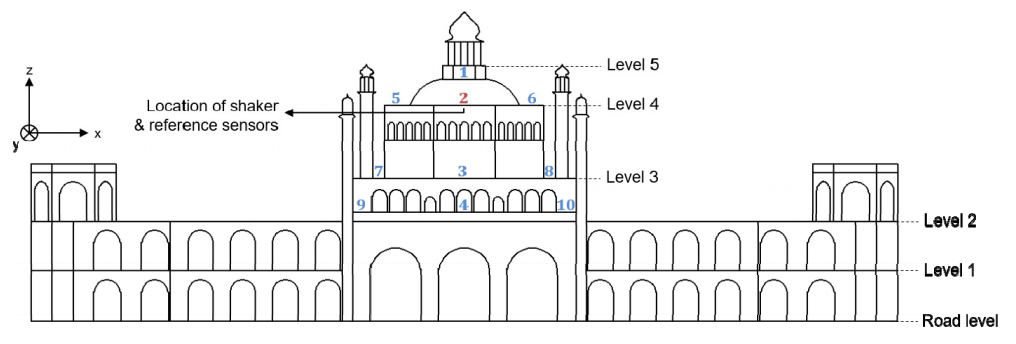Singh, Amanpreet1 and Rai, Durgesh C.2
1 Graduate Student, Department of Structural Engineering, University of California San Diego, La Jolla, CA, USA, ams082@eng.ucsd.edu
2 Professor, Department of Civil Engineering, Indian Institute of Technology Kanpur, Kanpur, UP, India, dcrai@iitk.ac.in
ABSTRACT
Historical monuments portray the architectural heritage and cultural wealth of a civilization. It is of paramount importance that these monuments be preserved for future generations. Foremost symbol of Lucknow Awadhi architecture, Rumi Darwaza is an 18th century gateway structure characterized by a half-spherical dome resting on half-octagonal plan and further supported by an arch. The masonry structure, built using thin burnt clay bricks (Lakhauri) and lime-crushed brick aggregate (surkhi) mortar, has developed major cracks in the arch due to natural aging and other environmental factors. Past earthquakes in India have highlighted the poor seismic performance of our monuments. Seismic assessment of historic monuments needs to be carried out to evaluate their structural response and draw out retrofitting plans to ensure their longevity. To assess the seismic performance, dynamic characteristics, such as natural frequencies, mode shapes and damping ratios, are required for realistic numerical simulation which have been obtained from field vibration tests. Laboratory experiments have been conducted to evaluate the mechanical properties of Lakhauri bricks, lime-surkhi mortar, and masonry assemblages also. A detailed Finite Element (FE) model, closely resembling the original structure, has been developed to understand the structural behaviour under seismic loads. Dynamic characterization results are seen to match closely with analytical predictions validating the FE model. Response Spectrum analysis showed the stiffening arch at the open face of half-dome to be the critical structural element with high tensile stresses at same locations where damages have been observed in the structure. Based on the developed understanding, two strengthening techniques using latticed structure of concrete filled hollow steel tubes to support the dome-arch from the inside have been proposed to reduce its vulnerability for seismic forces.
072



